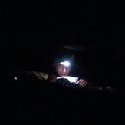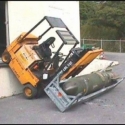|
Summary of Intelligence on the 'GLADIO' Network Thus Far, Prepared for the People's Congress by Source 'SUMMER SOLSTICE', Analyst, KGB August 22, 1981 While the idea of a force intended to resist an invader or occupier through guerrilla warfare can be traced back thousands of years, the modern concept of the 'stay-behind force' dates back to the Second World War. Such forces were highly secret, usually-unofficial clandestine paramilitary groups, armed and supplied by governments in order to, essentially, 'astroturf' a resistance movement in the event of an invasion. They would provide trained personnel, supplies, and equipment to resistance forces, recruit fighters, and carry out guerrilla attacks on the invader and their collaborators. Both sides established and operated such groups during WW2 to some extent, although in practice they made little impact. The much-feared Nazi stay-behind group, Werwolf, was a complete failure as a resistance organization, although it did successfully smuggle many Nazi war criminals to neutral nations, not all of whom we have managed to recover since. NATO seems to have expanded on the concept, a lot. Based on interrogations of captured members of reactionary groups involved in attacks over the last few years, we believe Gladio to have been a multinational network of clandestine organizations that were established in nearly every one of the alliance's member states, as well as several neutral countries. We are almost certain that parts of this network were actually active before the Great Revolutionary War, acting as deniable assets that could be used to eliminate enemies of the capitalist governments. Gladio was likely fully activated sometime fairly early in the War, and seems to have expanded operations since then, absorbing independent groups that previously had nothing to do with the original network. Existing conventional surveillance was of little effectiveness on its own, but combined with data gathered by the FESTER space stations, we have conclusively identified twelve sites that have a greater than 99% certainty of hosting active nodes of this network, all in Western Europe. All twelve of these confirmed sites are in rural areas, which is how we were able to isolate them so easily. Communication between them is effected through directional, ultra-low-power encrypted radio transmissions, bounced through a series of relays. We conjecture - though without hard evidence - that this method of communication is used primarily for high-level communication between leadership elements within the network, and that, locally, Gladio operates on a decentralized cell-based structure, communicating with their rank-and-file footsoldiers primarily through intermediaries and dead-drop. In addition to these twelve sites, we have identified a further 53 point sources with a greater than 75% probability of hosting active nodes of the network, and have narrowed down a further 56 such sites to within 50-square-kilometer search areas, all in Western or Central Europe. We have also identified a single frustratingly elusive mobile source, which is definitely sending radio communications to active nodes, but moves around too often for us to pinpoint it more specifically than 'somewhere within a few thousand kilometers of the North Sea'. If this network is also active outside of Europe, which we strongly believe it is, the European nodes are either not communicating with these more distant nodes via radio, or have developed some means of concealing their long-range transmissions from even TN-based sensors. The almost-certain presence of at least one node of this network on Luna has also led us to turn the FESTER sensors in that direction, but we have thus far found nothing out of the ordinary in communications between Earth and the Moon. Either they are communicating through more traditional means or not communicating at all. All members of the organization successfully interrogated so far have been 'foot-soldiers' of no particular importance to the organization, although they have all readily identified themselves as members when pressed. A majority of them have been former military or law enforcement personnel whose units were disbanded at the end of the war. Nearly all of them have had clean legal records since the end of the Revolution, with the exception of a single Sicilian Mafia associate delivered to us by his own compatriots (the Mafia is not at all friendly to the Comintern, nor us to them, but according to our local contacts they blame Gladio for getting in the way of 'business'). All claim to have been recruited through intermediaries, and all claim to have been recruited by individuals claiming they were acting with government sanction and as representatives of one of their country's intelligence agencies. These footsoldiers have all been members of small local groups, which receive occasional instructions from a higher authority but operate with near total autonomy when actually carrying them out, and sometimes engage targets on their own initiative. The claimed size of these groups has ranged from two individuals to sixty. They have been equipped with conventional small arms and explosives, the vast majority Great Revolutionary War surplus, which is readily available on the black market worldwide and can even sometimes be acquired for free by scavenging old battlefields or abandoned military sites. Some of these groups have been actively involved in organized crime in addition to political terror. All of the confirmed attacks carried out by Gladio cells so far have made use of small numbers of personnel and relatively unsophisticated tactics, and given the obvious scale of this operation, we are unsure why. We have put forward three hypotheses: - The organization is growing desperate, striking out with what limited resources they have in an effort to draw attention to themselves, hoping to ignite some sort of insurrection while they still have the means to do so. - The organization is attempting to sustain a long-term campaign of low intensity violence in order to keep its followers engaged, generate publicity for itself, and drive recruitment of a new generation to the organization, similar to the IRA's 'Border Campaign' in the 1950s. - The organization is deliberately concealing the full extent of its capabilities in an attempt to lull us into a false sense of security. We must stress that all of these are little more than educated guesses. It is entirely possible that none of them are true. In addition, we must stress that not every reactionary group engaged in violence against the Comintern is part of this network. This is a misconception that my colleagues and I believe Gladio to be stoking on purpose, they actively want everyone to believe they are bigger than they actually are. Many of the remaining militant groups in Europe, especially the ones actively contesting territory, are still isolated. We must plan our actions accordingly - if we act as though all our enemies are united, we may well unite them.
|
|
|
|

|
| # ? Apr 29, 2024 03:17 |
|
Mister Bates posted:We have also identified a single frustratingly elusive mobile source, which is definitely sending radio communications to active nodes, but moves around too often for us to pinpoint it more specifically than 'somewhere within a few thousand kilometers of the North Sea'. I don't want to be one of those assholes and bring up the Revenge, but... well, has anybody turned up a convincing wreck of the SSBN Revenge yet? Actually wait, the nerds used one of the new sensor packages to map a bunch of new unknown shipwrecks at an archaeological site didn't they? Can we use that technology to look for subs and/or wrecks elsewhere on the planet?
|
|
|
|
Crazycryodude posted:I don't want to be one of those assholes and bring up the Revenge, but... well, has anybody turned up a convincing wreck of the SSBN Revenge yet? Finding a moving, floating object seems like a slightly taller order than a stationary shipwreck on the bottom of the ocean. Might still be possible though, but we can't exactly recall one of the ships without arousing suspicion. Also, if we're trying to find Gladio cells outside of Europe, my first instinct would be to look into the drug markets of Asia and the Americas.
|
|
|
|
Mister Bates, a question to our intelligence and/or diplomatic corps representatives: Would using certain basic, low-level facts from this report help either in negotiations with these non-aligned militant groups or help prevent them from being co-opted/used by Gladio operatives? We should assume that anything used in this manner would eventually get back to Gladio, so we' be limited to things we've plausibly already gathered, like the name, their general purpose and their allegiance to old, fallen states.
|
|
|
|
feeling pretty doxxed by that collection of traits.
|
|
|
|
Since Venus has some TNEs I'll be proposing the Venera Initiative again next commintern session, better worded as not to conflict with other tech initiatives. I'm also thinking about proposing the development and construction of mining ships to start farming those asteroids, unless that's already in the pipeline
|
|
|
|
Pacho posted:Since Venus has some TNEs I'll be proposing the Venera Initiative again next commintern session, better worded as not to conflict with other tech initiatives. I'm also thinking about proposing the development and construction of mining ships to start farming those asteroids, unless that's already in the pipeline Yeah, looks like Orbital Mining Module is already being researched, so it looks like it's in progress. Also Mister Bates, a gameplay question: what's the point of Geosurvey Equipment? Is a ground survey different from doing the survey from space?
|
|
|
|
Orbital mineral surveys are basically the "first pass" you get at a body, sometimes a body will have further ground survey potential to try and catch things the orbital scan missed. If a body does have potential, you can send a ground survey team equipped with ground survey vehicles to do an in-depth survey of the body and potentially turn up new deposits of minerals/up the accessibility of existing deposits.
|
|
|
|
Crazycryodude posted:I don't want to be one of those assholes and bring up the Revenge, but... well, has anybody turned up a convincing wreck of the SSBN Revenge yet? A stationary object the size of a submarine could definitely be located with geosurvey sensors, eventually, but they're not going to be able to reliably resolve anything mobile, and even locating a stationary object on a planet the size of Earth, with as much stuff on it as Earth, could take months. That having been said, you could still try, and if you specify a more narrow search area it'll take correspondingly less time.
|
|
|
|
In order to deal with Gladio, the UAWR is planning to propose what we call the "Order by Rail" initiative. All across the world logistical networks are still ruined by bombshell, ravaged by time and neglect or even deliberately sabotaged in order to keep isolation. To deal with this, we want to create a truly global railway network, with lines to every village. Cars allow for personal mobility and roads and highways made for them are therefore invaluable to groups like GLADIO, destroyed infrastructure and that which caters to the automobile are both vectors for insurrectionist groups like them. What's more, they make personal mobility a matter of status and wealth, restricting the proletariat. A rail to every town makes a region united and lessens the avenues of movement for rebels while also greatly increasing them for the workers.
|
|
|
|
Antilles posted:Indeed, this Gladios problem seems to be a bigger and deeper issue than previously feared. We should look to creating a special task force to deal with them, perhaps with counter-intelligence training since they seem to be heavily into cloak and dagger work. Maybe even set aside lab time to upgrade the intelligence gathering ability of the satelites? Perhaps if the surveillance outpost were to be fitted with some sort of experimental orbit-to-surface weaponry so their noble and extremely ethical commander could simply vaporize the fascists from orbit as they were detected... Alternately ship me up a box of titanium rods and I'll just start eyeballing the shots and dropping them out of the airlock.
|
|
|
|
quote:(A small man with dark hair and thick spectacles is sitting behind a desk signing and filing papers. Somehow his spacesuit looks as though it needs ironing. He has attached a tie to the collar ring. This is Administrator Orphan, leader of the colony. He shows as little emotion as possible.)
|
|
|
|
The RCORR would like to put forth a plan to deal with the Gladio situation. Well, it's less of a plan, and more of methodology. The FESTER project has given informational control far beyond any capability any comrade could have possibly imagined. Although we might not be getting the specific conversations out of any intercepted transmission, it is allowing the gathering of precise information on locations and assumedly, cell numbers. If the cells are not inter-linked, as theorized, then perhaps by leveraging the large amount of operational information, we could turn the cells on each other. The way we could do this would be by intercepting dead drops, replacing orders with new orders which have the cells working against each other, or similarly disrupting the chain of command and replacing their orders with more beneficial to the world as a whole. Of course, this plan would likely required trained teams of counter-intelligence agents in order to pull off. One large advantage in this plan is their relative unawareness of effectiveness of FESTER. NewMars posted:In order to deal with Gladio, the UAWR is planning to propose what we call the "Order by Rail" initiative. All across the world logistical networks are still ruined by bombshell, ravaged by time and neglect or even deliberately sabotaged in order to keep isolation. To deal with this, we want to create a truly global railway network, with lines to every village. Cars allow for personal mobility and roads and highways made for them are therefore invaluable to groups like GLADIO, destroyed infrastructure and that which caters to the automobile are both vectors for insurrectionist groups like them. What's more, they make personal mobility a matter of status and wealth, restricting the proletariat. A rail to every town makes a region united and lessens the avenues of movement for rebels while also greatly increasing them for the workers. Also this plan is supported, because, rail networks, gently caress yeah. thatbastardken posted:comedy gold 64bitrobot fucked around with this message at 13:29 on Nov 9, 2020 |
|
|
|
So the game is modelling GLADIO as a whole AI-controlled empire? Can it build spaceships?
|
|
|
|
GunnerJ posted:So the game is modelling GLADIO as a whole AI-controlled empire? Can it build spaceships? That's a chilling possibility. I propose we divert labs to ELINT research as soon as possible. We need to break GLADIO's codes quickly. We also need to locate that transmission source around the North Sea; I suspect a NATO nuclear submarine.
|
|
|
|
64bitrobot posted:Also this plan is supported, because, rail networks, gently caress yeah. Yes. Transnewtonian trains linking Beijing to Lisboa, Stockholm to uh I'm not sure which African nations are with us but somewhere in the south, Santiago to Los Angeles, in minutes or hours! Also transnewtonian shuttles to carry people across the oceans that the trains, well, can't. I believe that's a tech to research, too, speeding up loading/unloading various ships. GunnerJ posted:So the game is modelling GLADIO as a whole AI-controlled empire? Can it build spaceships? No, we had a screenshot earlier showing us FESTER's sensors active, if there had been another empire on Earth, its thermal/EM signatures would've shown. And the deep space tracking station would've shown it too a long time ago, come to think of it. I do hope though some other empires can come up in time, even (especially) if adversarial. Japan seems more or less intact and not Comintern-aligned? Maybe a North American federation rising from the ashes? Some alliance built up by Hawaii?
|
|
|
|
GunnerJ posted:So the game is modelling GLADIO as a whole AI-controlled empire? Can it build spaceships? There are five orbital shipyard stations, four of them controlled directly by the Ministry and one controlled by the neutral but very much Comintern-friendly Kingdom of Hawaii. A sixth, even a small one, would be immediately noticed as soon as it was launched That having been said, the Hawaiians did build two ships on the ground and then brute-force them into orbit with chemical rockets, so doing so again is technically possible, it would just be extremely resource-inefficient, and the industrial effort required to do so would be very easy to detect (even the Hawaiians didn't conceal that they were building something big, only what they were building). Small ships (sub-1000 tons) using Trans-Newtonian engines can get to orbit on their own power, but, again, developing and building those engines is a significant industrial undertaking, and the Comintern is probably the only power on Earth that can do so right now. The most significant non-Comintern nations right now are Japan, India, the Arab League, and the hermit state of Israel. There are also a few unaligned North American polities, and various minor states scattered around the world that remain unaligned. India has an active (Comintern-aligned) communist insurgency and two sizable communist parliamentary parties and is extremely unstable internally. A full-on intervention there has been discussed, but the country is so huge that doing so right now would involve a large conventional war followed by probably many years of occupation, which is not a trigger anyone has been willing to pull yet. They have a developing economy and are a net exporter of food. Japan, which was almost entirely undamaged by the war, has managed to chart a careful course. They have mostly appeased the Japanese Communist Party and other socialist groups (a significant minority in the Japanese political landscape) by enacting sweeping social and economic reforms and pursuing a policy of official neutrality with the Comintern, while at the same time massively expanding the JSDF, taking in exiles from America and other capitalist powers, and reinforcing the power of the central government. The Japanese mainland is effectively unassailable militarily, and their economy remains fairly strong (they're pretty much the only remaining non-Comintern power with a developed high-tech industrial sector). What's left of the United Nations is headquartered in Osaka. The League actually includes four Comintern members, Libya, Algeria, the Palestinian Liberation Organization, and South Yemen, and they have helped to moderate the body's position on socialism a great deal. It is still a powerful regional bloc composed of nations that are largely non-socialist. Their economy boomed in the immediate aftermath of the war, but with the rise of the Trans-Newtonian era, the future of oil as a commodity is in doubt, and who knows what that means for the League going forward. Israel abandoned nearly all of the territory it gained in 1967 during the later wars, but has proven stubbornly difficult to actually dislodge. This is primarily because they very publicly tested a nuclear weapon in the Negev in 1972, with the promise that they would resort to the nuclear option immediately if attacked. Nobody has been particularly interested in calling them on that yet, and Israel remains a tiny fortress-state under permanent siege. They wouldn't be all that notable if they didn't have the Bomb.
|
|
|
Servetus posted:That's a chilling possibility. The signal in the North Sea could be a problem. If it turns out to be the Revenge or some other NATO remnant nuclear submarine, then it might be something of a "Dead Man's Switch," with orders to fire a nuclear payload if it goes without regular check-ins, an insurance policy if the rest of the organization is hopelessly dismantled. We have a surveillance advantage at the moment, but if we tip our hand too early, even with a simultaneous coordinated raid on every identified likely Gladio site, it could be disastrous. However, if we wait too long, Gladio might find out about FESTER and decide to burn all their compromised assets, and us, in nuclear fire. We need to find and neutralize that mobile signal.
|
|
|
|
|
Mister Bates posted:That having been said, you could still try, and if you specify a more narrow search area it'll take correspondingly less time. I think we should still give it a shot, we don't need to scan the whole planet but at least the North Sea, then the Arctic and North Atlantic if possible. If nothing else finding some wrecked subs left over from the war sitting on the bottom lets us know where a bunch of nuclear reactors and/or warheads are just laying around so we can clean them up later. And if the wreck count comes up a few "dead" subs short....
|
|
|
|
In before a TNE jerry rigged sub burst from the ocean and takes to the skies.
|
|
|
|
Asterite34 posted:The signal in the North Sea could be a problem. If it turns out to be the Revenge or some other NATO remnant nuclear submarine, then it might be something of a "Dead Man's Switch," with orders to fire a nuclear payload if it goes without regular check-ins, an insurance policy if the rest of the organization is hopelessly dismantled. We have a surveillance advantage at the moment, but if we tip our hand too early, even with a simultaneous coordinated raid on every identified likely Gladio site, it could be disastrous. However, if we wait too long, Gladio might find out about FESTER and decide to burn all their compromised assets, and us, in nuclear fire. We need to find and neutralize that mobile signal. Is there a way for us to research an anti-missile, planet-wide defense system that could help us destroy potential NATO/Israeli/Japanese nukes before they reach their intended targets?
|
|
|
Pacho posted:Is there a way for us to research an anti-missile, planet-wide defense system that could help us destroy potential NATO/Israeli/Japanese nukes before they reach their intended targets? If we do this, it will have to be Manhattan Project-level secret. While the tech to neutralize conventional ICBMs might be possible, it would take time to implement across the whole globe. And in that time, various world powers, and potentially Gladio, will be seeing their nuclear deterrents slowly becoming obsolete and MAD no longer being in effect, and a lot of global conflict is being suppressed by the possibility of a strategic nuclear World War Four. They may decide to take a "it's now or never" approach with their nuclear arsenals, and I can't guarantee everyone would pick "never" e: Perhaps we work towards a global nuclear disarmament treaty? The Comintern's pre-TNE nukes are likely to be obsolete anyways, it would be a show of international solidarity (and therefore a PR coup), and would eliminate the threat of spooking any "legitimate" nuclear powers with anti-missile defenses upsetting MAD. As for the missile defense itself... dress it up as anti-alien defense? Asterite34 fucked around with this message at 19:13 on Nov 9, 2020 |
|
|
|
|
Crazycryodude posted:I think we should still give it a shot, we don't need to scan the whole planet but at least the North Sea, then the Arctic and North Atlantic if possible. If nothing else finding some wrecked subs left over from the war sitting on the bottom lets us know where a bunch of nuclear reactors and/or warheads are just laying around so we can clean them up later. We could wait for our next batch of geological survey ships (so that we don't have the two we sent come back, which might be suspicious), use FESTER to spot the transmission and redirect one of the new geological survey ship as appropriate. Pacho posted:Is there a way for us to research an anti-missile, planet-wide defense system that could help us destroy potential NATO/Israeli/Japanese nukes before they reach their intended targets? By game mechanics, we could build orbital weapon platforms armed with nothing but a meson turret, a small sensor and a beam fire control, I think it could be small enough to be made by fighter factories. They'd be capable of shooting incoming missiles from off Earth. And I specifically say "meson" because it can shoot through atmosphere like it's not there, while other weapons lose damage the closer the atmosphere is to 1 atm, IIRC? Asterite34 posted:e: Perhaps we work towards a global nuclear disarmament treaty? The Comintern's pre-TNE nukes are likely to be obsolete anyways, it would be a show of international solidarity (and therefore a PR coup), and would eliminate the threat of spooking any "legitimate" nuclear powers with anti-missile defenses upsetting MAD. As for the missile defense itself... dress it up as anti-alien defense? Somehow I don't think the other powers would let go of their only possible defence against us, when we're technically already capable of bombarding them from orbit by tossing rocks out our freighter. Sanev.Khan fucked around with this message at 19:23 on Nov 9, 2020 |
|
|
|
Gladio is far more likely to deliver nuclear weapons in a truck than a missile. Particularly if this last-surviving American submarine has been on deployment for a decade without a dock to service the tubes and refresh the fuel.
|
|
|
|
Asterite34 posted:The signal in the North Sea could be a problem. If it turns out to be the Revenge or some other NATO remnant nuclear submarine, then it might be something of a "Dead Man's Switch," with orders to fire a nuclear payload if it goes without regular check-ins, an insurance policy if the rest of the organization is hopelessly dismantled. We have a surveillance advantage at the moment, but if we tip our hand too early, even with a simultaneous coordinated raid on every identified likely Gladio site, it could be disastrous. However, if we wait too long, Gladio might find out about FESTER and decide to burn all their compromised assets, and us, in nuclear fire. We need to find and neutralize that mobile signal. It is possible that they are simply using a civilian freighter as a cover, to keep their command mobile. Until we know we have to assume the worse however. Cracking their codes is a first priority, once we've identified the transmission source we can compare ship movements to see if it is a surface vessel, and search for a potential submarine. We should also start looking into a plan for dealing with the submarine, if it exists: what would be the most effective weapons platform for cutting the head off the snake. A meson turret may be most effective for stopping a missile launch, but we need suggestions on how to destroy the submarine without it getting a message out or launching.
|
|
|
|
Sanev.Khan posted:We could wait for our next batch of geological survey ships (so that we don't have the two we sent come back, which might be suspicious), use FESTER to spot the transmission and redirect one of the new geological survey ship as appropriate. Atmosphere won't be an issue for missile defense unless it is for fluff reasons. You could make a turreted gauss cannon and that would do just fine if not better besides the research expense and size. But yeah weapon platforms would be the way to do it.
|
|
|
|
We build two new survey ships. For surveying the outer systems. We've been having some troubles with asteroids and space debris impacting our two original survey ships you see so we'll just add some trans newtonian CIWS to them and really good targeting systems. Ofcourse one of them will be stationed above earth and rotate with the other. The incredibly long deployment time just makes this a given. One crew rests and performs maintenance and the other surveys.
|
|
|
|
Speleothing posted:Gladio is far more likely to deliver nuclear weapons in a truck than a missile. Particularly if this last-surviving American submarine has been on deployment for a decade without a dock to service the tubes and refresh the fuel. As a former member of the Commonwealth of New England, I must remind the good Comrade that there was a US sub base in Groton, CT. The USN also held control of the sub base in Holy Loch, Scotland. I think it's likely that those locations and materials were scrapped after sustaining significant damage during the war and the important surviving technologies and personnel were moved to different locations to support any surviving submarines.
|
|
|
|
Pacho posted:Is there a way for us to research an anti-missile, planet-wide defense system that could help us destroy potential NATO/Israeli/Japanese nukes before they reach their intended targets? Memorandum by Academician Kodos in response to a request by the PVO of the Soviet Union Missile-defense was ruled out as ineffective in the years prior to the revolution by several studies conducted by your organisation. Conventional weapons, such as SAMs or anti-aircraft artillery are incapable of engaging the hypersonic RVs of missiles plunging in from space, while the later could theoretically throw of a screen of exploding shells, the logistics of such a defence are plainly ridiculous. Nuclear tipped SAMs are considered an option, but will produce substantial fallout when employed in the required density to blot out incoming missiles and will degrade future electronic tracking. TNEs will change the correlation of forces substantially. Most theoretically envisioned weapons will be capable of destroying missiles (or aircraft in flight for that matter) to some degree. While missiles equipped with TNE-based engines are much more manoeuvrable than conventional units, their speed is still limited by having to traverse the atmosphere, which will rule out ground-based anti-ship missiles as well. Missiles fired from outside the atmosphere for an engagement at the apogee of the missiles trajectory will remain possible. LASERs and Meson-based weapons will prove effective as well, but will require substantial support-equipment, such as fast-traversing turrets, reactors and sensors for tracking and fire-control. As such, they are only useful when mounted on an orbiting vessel. While Coilguns will suffer from similar hindrances, with the exception of not requiring a high-power source of electric energy, the Red Navy hinted at a possible solution. Engineers from the Red Banner Northern Fleet have demonstrated the AK-630; a small, self-contained gatling-gun, equipped with sensors and capable of autonomously engaging incoming targets. Such a CIWS could possibly be implemented with TNE-enhanced sensors, power-systems and a coilgun as its main-weapon and fed from normal electric infrastructure. This leaves us with two possible avenues of implementing any kind of global missile-defence: - a fleet of small orbiting vessels, armed with weapons capable of engaging missiles outside the atmosphere. - a network of ground-based CIWS-installations distributed over the territory of the COMINTERN However none of the technologies discussed here are currently in or even close to being effectively deployed in the foreseeable future.
|
|
|
|
Pacho posted:Is there a way for us to research an anti-missile, planet-wide defense system that could help us destroy potential NATO/Israeli/Japanese nukes before they reach their intended targets? Any TN ship in orbit with PD should be able to obliterate just about any sort of conventional ICBM launch. The flight time of any ICBM is measured in minutes, and for a TN ship the travel time to any point in near-Earth orbit is seconds. Our new sensors are capable of detecting minerals well below the surface of the planet. While the cores of nuclear weapons are shielded, they were never designed to shield against this new generation of sensors. Is there any reason we can't map out the location of every nuclear weapon on the planet?
|
|
|
|
I ride bikes all day posted:Any TN ship in orbit with PD should be able to obliterate just about any sort of conventional ICBM launch. The flight time of any ICBM is measured in minutes, and for a TN ship the travel time to any point in near-Earth orbit is seconds. I imagine must geological/navy sensors are are made for bigger quantities in mind though I suppose we could research and deploy a specific sensor for this.
|
|
|
|
They're also made primarily for finding TNEs with their interdimensional properties. Uranium might just be too... pedestrian to detect with such precision.
|
|
|
|
Trying to find every bit of radioactive material in the world is a little outside of our current needs. We need to identify and locate one vessel, possibly a nuclear submarine, and work out what kind of resources we need to deal with Gladio. Tracking down every scrap of Uranium in the world or building a global missile defense shield are a little outside of our current needs.
|
|
|
|
Mister Bates posted:India has an active (Comintern-aligned) communist insurgency and two sizable communist parliamentary parties and is extremely unstable internally. A full-on intervention there has been discussed, but the country is so huge that doing so right now would involve a large conventional war followed by probably many years of occupation, which is not a trigger anyone has been willing to pull yet. They have a developing economy and are a net exporter of food. Let's see... what's the situation for the common citizen in India these days? Would it help stabilize them if we give them a sweetheart deal on prefab buildings and basic infrastructure (basically earmarking part of Socialist Aid for India for a while) in exchange for their surplus food (which is immediately folded in to the Socialist Aid program and shipped around the world to help combat starvation and malnutrition), making sure to credit the deal to their communist parties to hopefully give them a boost? Not too much we can do about Japan, maybe make a Hawaii-like deal for manufacture/trade/research and see where it goes? The League, hmm... maybe a good carrot for convincing the rest to join ComIntern would be an offer to help them specialize in refining Solonium into fuel? It wouldn't be quite the same as oil since they can't monopolize it or profit from it, but giving them a regional project to lead the way in transitioning from oil to Solonium fuel might be a good enough motivation to overcome that? Like a promise to build the first fuel refinery in their territory and admitting promising scientists to our academy for further specialization? Israel... not touching that with a ten-foot pole. Maybe eventually we can get a variant of the Oslo Accords up and running to hopefully stabilize things, but right now there are bigger fires to fight.
|
|
|
|
I agree with the theory that if Gladio initiates a nuclear attack it's likely to not be ICBM in nature. Additional FESTER elements to actually decode and interpret Gladio communications would likely be wise to get operational before tipping them to the fact they're not hiding anymore.
|
|
|
Kitfox88 posted:I agree with the theory that if Gladio initiates a nuclear attack it's likely to not be ICBM in nature. Additional FESTER elements to actually decode and interpret Gladio communications would likely be wise to get operational before tipping them to the fact they're not hiding anymore. ICBMs are unlikely, but if they do have a nuclear ballistic missile submarine (with some continuing source of supply and maintenance coming from somewhere), they could easily have access to Polaris missiles. While not an ICBM, from the North Sea they could throw a 600 kiloton warhead pretty much anywhere west of Novgorod and north of Lisbon.
|
|
|
|
|
Our Shipwrights have finally completed the hull layout for a colonial transport vesselcode:It is not considered viable to make a passenger liner at this time. Even 1000 passengers requires a 10,000 ton spaceframe
|
|
|
|
Veloxyll posted:Our Shipwrights have finally completed the hull layout for a colonial transport vessel Commericals don't need MSP or maintenance, so unless this is just to transport it its a waste of space and tonnage.
|
|
|
|
Little bit of that. It's gently caress all tonnage in the grand scheme of things either way. It wasn't a case of "I really want more MSP for RP but that's denying me more fuel/engines/cryopods" - it's literally 50 tons on a 20,000 ton spacewhale. If Gladio wants to sabotage our colony ships, they're gonna have to work for it
|
|
|
|

|
| # ? Apr 29, 2024 03:17 |
|
Antilles posted:Mister Bates, a question to our intelligence and/or diplomatic corps representatives: Would using certain basic, low-level facts from this report help either in negotiations with these non-aligned militant groups or help prevent them from being co-opted/used by Gladio operatives? We should assume that anything used in this manner would eventually get back to Gladio, so we' be limited to things we've plausibly already gathered, like the name, their general purpose and their allegiance to old, fallen states. Probably. There are a number of regionalist or secessionist groups who would be just as opposed to the restoration of the old governments as they are to the new ones. The far right is also just as prone to violent infighting among different tendencies as the far left used to be. August 28, 1981 After weeks of observations, the thermal sensors on the Proton station have been able to identify anomalous heat sources at the locations of six of the twelve point confirmed GLADIO sites identified via EM emissions. Current conjecture is that they are exhaust or ventilation systems for underground structures. In slightly more mundane news, intelligence from FESTER aids local forces in encircling and ambushing an organized bandit gang, the Minnesota Patriot Corps, east of Minneapolis. The group is nominally loyal to the National Reconstruction Committee, one of the smaller of the rival US governments, and has been a thorn in the side of the locals for years. The operation is quick and total, and there is minimal loss of life among friendly forces. September 4, 1981 An explosion at the Hawaiian orbital shipyards, initially feared to be a terrorist attack, is quickly confirmed to be an industrial accident involving a tank of welding fuel. One of the station's gantries sustains minor, but repairable, damage. September 15, 1981 Mining isn't what it used to be. The complex the documentary crew is filming looks more like a laboratory than a mine. A raised, glass-windowed control room, all analog gauges, CRT monitors, blinking lights, and computer panels, looks down on a clean, smooth-walled, smooth-floored pit filled with incomprehensible machinery, all of it connected to the centerpiece - the shaft, a broad, circular hole that extends down seemingly into infinity. Above it, pointing down into it, the 'drill', the huge, rotating array that opens a trans-dimensional bore and pulls TNEs into realspace. It isn't on now - workers swarm over it, in climbing harnesses or on boom lifts, performing final checks before the grand opening. This mine, in South Wales, was always a mine - it used to be a coal pit, and most of the workers were coal miners. Coincidentally, the depleted pit was perfectly situated to access a prime neutronium deposit, and was selected as a candidate for conversion into a TNE mine. It's taken months, but at last, the site is almost ready to come online, and film crews are here to capture the moment. The site foreman looks like a cartoon stereotype, dirty overalls and a dirty mining helmet and a dirty face. The grime seemingly came from nowhere; there certainly isn't any to be found anywhere else in the complex. He stalks around the floor with a bullhorn and clipboard, gesticulating wildly, managing the organized chaos like a maestro conducting an orchestra. He makes a good subject for the cameras to focus on while waiting for the main event. At length the final checks are finished and the workers are cleared out. The switch is thrown. There is a sound like a thunderclap, and a flickering beam of electric blue light erupts from the 'drill's main emitter, intense, blinding. After a few seconds it vanishes, leaving a streak on the eyes of observers, and the gravity generators in the outer ring fire a millisecond later, distorting the air above the shaft as though it were superheated. The first batch of ore floats up out of the shaft about thirty seconds later. It's surreal. The black lump, about the size of a compact car, floating silently up out of the floor, is...blurry, difficult to resolve, like it's out of focus, and the wall behind it can be dimly made out through the object - but, somehow, it's unmistakably, physically, present. It's solid and not solid, both there and not there. A mechanical arm extends from a wall and scoops it into a waiting hopper, to cheers and applause from the control room crew. The next chunk follows moments later, and then the next, and the next, fed into the hopper to be carried off to the refinery for stabilization. The workers return to the floor. There is much to be done to keep these machines running. Every once in a while there is more thunder and lightning, and loud mechanical whirring as the 'drill' makes minute targeting adjustments. The workers ignore it. It's just part of the job now. We're bringing it up the well. There are over 375 operational Trans-Newtonian mining complexes worldwide as of now, and in keeping with legislation we are currently back to working on Construction Factories again. September 29, 1981 The first direct radio transmission between Lunagrad and the Mars outpost, unofficially called 'Barsoom', is received. It's mostly an experiment to test new radio equipment, but makes for good PR too. October 3, 1981 After months of preparation, the Comintern's Public Broadcasting Service is officially inaugurated. The PBS networks are public-access, with a low barrier to entry, and the content and quality of the early offerings varies enormously, which is arguably the point. October 12, 1981 The debut of the first community television program ever produced on the Moon, 'Tranquility Talk', an educational program broadcast on PBS-Lunagrad focused on teaching languages and fostering mutual understanding. Future historians will credit the show with popularizing the standardized EVA-suit sign language currently being developed by the government for MOSA, and the more colloquial 'Spacer Sign' it's already starting to evolve into even while it's still in development. October 22, 1981 The CSV Karzelek nearly collides with a small asteroid during a scanning pass, due to a flaw in a maneuvering thruster. A successful spacewalk is carried out to repair what turns out to be a fairly minor issue. It is the first such operation ever conducted outside of Earth orbit. November 3, 1981 The survey of the asteroid belt is nearly complete, and the Karzelek moves on to Jupiter's trailing Trojans, achieving another milestone: the first crewed spacecraft to ever reach the outer planets. November 18, 1981 In a shocking move, the new revolutionary government of South Africa announces its intention to proceed with unilateral nuclear disarmament, setting a two-year timeline for decommissioning of the entire South African nuclear arsenal. The country will become the first state in history to voluntarily become an ex-nuclear power. November 22, 1981 An unusually severe early snowstorm, reminiscent of the worst radstorms of the immediate post-war era, ravages the American Midwest. Socialist Aid Program housing blocks weather the storm well, and are able to retain heat even when power is lost. The FESTER stations are put to non-military work, aiding the People's Army and local forces in navigation and search and rescue operations. Comintern all-terrain supply trucks push through the ice and the ashy snow, bringing much needed relief. Fifty-three people still die, but the last time this happened, the losses were in the thousands. December 1, 1981 The Luna Planning Committee releases their first annual report, summarizing the development of the Lunar colony. Lunplan reports that local governance has mostly stabilized into a formalized structure, with local collectives centered around specific hab units or specific workplaces as the basic unit of organization. There is a largely self-sufficient local agricultural sector, a basic but functional service economy, and functioning, albeit understaffed, light industry in place to manufacture equipment and supplies for the People's Army Training Command, still based there. The Training Command itself is functioning primarily as a laboratory for testing new techniques and equipment for planetary operations; in particular, much of the infrastructure used in the Mars outpost was first tested there. Much of the Lunar workforce is employed in support of this work. The Moon is still dependent on Earth for high-tech components, some raw materials for its light industry, and most luxury goods. It is also currently at capacity for life support, and cannot support any significant additional population without a large development investment. December 13, 1981 The Russian submarine Dmitri Donskoi, the largest submarine in human history, is commissioned. Though originally designed as a strategic nuclear weapons platform, this function was deemed unnecessary in light of the current global situation, and the ship is now a research testbed for the development of TNE-based military technologies. The USSR is already quietly planning what they call a 'fourth generation' nuclear submarine using a Trans-Newtonian reactor as a power source, although any practical implementation of this idea is likely many years away. December 17, 1981 Four American veterans of the Vietnam theatre of the Great Revolutionary War visit Hanoi as guests of the local government. They officially and publicly apologize for their role in the conflict. December 18, 1981 The delegates of the People's Congress begin assembling at this year's meeting location, Dublin, Republic of Ireland. December 28, 1981 The 1982 session of the People's Congress is called to order.  I have set the map to only display asteroids with mineral deposits in this image, to make the view more readable. Planets  Earth  Luna  Mars Industry - Earth  Minerals - Earth  Shipyards   Research  Mineral Survey Report  All Updates for 1981 (excluding this one, obviously): https://forums.somethingawful.com/showthread.php?threadid=3943978&userid=166604&perpage=40&pagenumber=2#post509707220 https://forums.somethingawful.com/showthread.php?threadid=3943978&userid=166604&perpage=40&pagenumber=2#post509730671 https://forums.somethingawful.com/showthread.php?threadid=3943978&userid=166604&perpage=40&pagenumber=2#post509747073 https://forums.somethingawful.com/showthread.php?threadid=3943978&userid=166604&perpage=40&pagenumber=2#post509772302 sorry for the large number of short updates, I haven't had a ton of free time this past week or so and decided it was better to do that than just not post anything at all The 1982 legislative session is now open! All legislative proposals must now be SECONDED before they will be brought to the floor for a vote. Second a proposal by quoting it in a reply with the bolded text 'Second'. Orders of the day: - Any changes to industrial or research planning you wish to make. Bear in mind that, per current legislation, these plans must be made in five-year increments. - The alien ruins on Mars. What do we do with them? - The intelligence we've collected. What is to be done? - A few noteworthy things that have happened that may be worth commemorating with the creation or award of a medal or service ribbon: the surveying of the inner solar system, the first manned spacecraft to Mercury, Mars, Venus, and the asteroid belt, the first human visit of a comet, the first manned spacecraft in the outer solar system, the establishment of a permanent outpost on Mars, the scoring of an intelligence coup against the Gladio organization, the greatest archaeological find in human history. The floor is now open for deliberations and will remain open for at least ~48 hours before we move on to voting. Mister Bates fucked around with this message at 22:27 on Nov 10, 2020 |
|
|




























